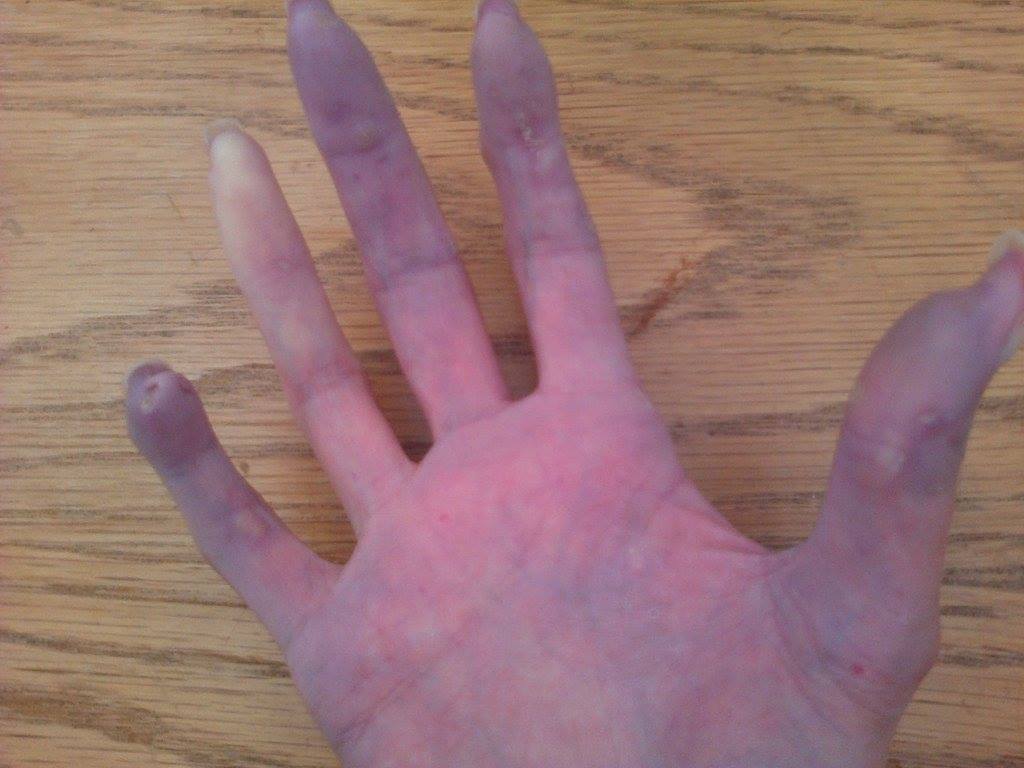1st Symptom at Onset of SSc Should Be Considered a Prognostic Factor, Study Shows

The first clinical symptom at onset, also called the mode of onset, should be considered a prognostic factor in patients with systemic sclerosis (SSc), new research shows.
The study. “First clinical symptom as a prognostic factor in systemic sclerosis: results of a retrospective nationwide cohort study,” was published in the journal Clinical Rheumatology.
SSc is an autoimmune disorder that can involve a form of Raynaud’s phenomenon, which refers to the discoloration of fingers or toes after exposure to changes in temperature or emotional events. The condition usually affects smaller arteries that supply blood to skin and distal parts of the body (such as fingers and toes).
Raynaud’s phenomenon is prevalent in almost all SSc patients, affecting 95% of patients that fit the 2013 ACR/EULAR criteria.
The onset of SSc is most frequently in the form of Raynaud’s phenomenon. However, some patients have other modes of onset including visceral involvement, musculoskeletal involvement or skin thickening without Raynaud’s phenomenon.
Several risk factors are related to poor SSc prognosis, including increased age at onset, male gender, diffuse subtype, and visceral involvement. However, no study until now has taken into account the mode of onset and how it can relate to a poor prognosis.
Therefore, researchers described the clinical spectrum of a large group of patients with SSc from the Spanish Scleroderma Registry (RESCLE) to determine the relationship between mode of onset and prognostic outcome.
Among the cohort of 1,625 patients, 1,342 patients (83%) presented Raynaud’s phenomenon as the first symptom. The remaining 283 patients (17 percent) did not have Raynaud’s phenomenon, but did have puffy hands, arthralgia/arthritis, skin sclerosis, interstitial lung disease (ILD), pulmonary arterial hypertension (PAH), or esophageal hypomotility.
When patients had with more than one symptom, it was up to the discretion of the physician to choose the first symptom.
Survival was determined at different intervals. At each time point, patients with Raynaud’s phenomenon as the mode of onset had higher survival than patients with non-Raynaud’s phenomenon onset. The percentage of survival for patients with Raynaud’s onset vs. non-Raynaud’s onset at five years was 97% vs. 90%, at 10 years 93% vs. 82%, at 20 years was 83% vs. 62%, and at 30 years was 71% vs. 50%, respectively.
The mode of onset of puffy hands or pulmonary involvement were particularly associated with higher mortality.
When looking at other factors, mortality was also associated with older age at onset, male gender, diffuse cutaneous systemic sclerosis (dcSSc), ILD, PAH, scleroderma renal crisis (SRC), and heart involvement.
“The mode of onset should be considered an independent prognostic factor in systemic sclerosis and, in particular, patients who initially present with non-Raynaud’s phenomenon may be considered of poor prognosis,” the researchers concluded.






